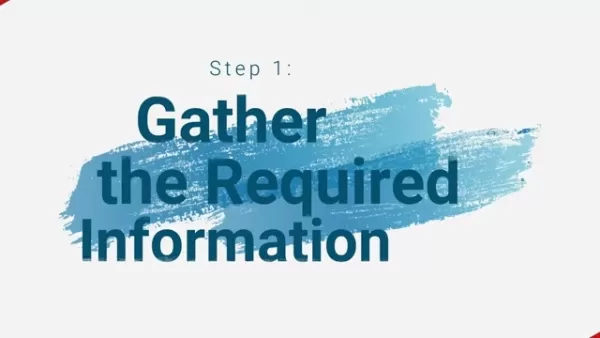AI-Powered Vulnerability Assessments: A Comprehensive Guide
The Rising Threat of Cybercrime and the Need for AI-Driven Vulnerability Assessments
In 2023, according to a report by Cybersecurity Ventures, the annual cost of cybercrime is expected to soar to a staggering $10.5 trillion by 2025. Year after year, the number of cybercrimes reported continues to break records, highlighting the urgent need for a shift in traditional security practices. Enter vulnerability assessments—a critical component in identifying and addressing weak points within systems to protect against malicious actors and hackers.
As cyber threats grow in sophistication, organizations are increasingly turning to artificial intelligence (AI) to bolster their vulnerability assessments. AI isn’t just a buzzword; it’s a game-changer in the realm of cybersecurity, enabling faster, more accurate threat detection and management.
Understanding Vulnerability Assessments
Vulnerability assessments serve as the backbone of proactive cybersecurity measures. These assessments are designed to uncover, evaluate, and prioritize security risks and vulnerabilities in software systems, applications, and networks. The process involves several methodologies:
- Security Analysis: This involves both static and dynamic analysis of systems to detect bugs in both idle and operational states.
- Package Vulnerabilities: Scanning for vulnerabilities in the versions of binaries and libraries used in code can prevent unauthorized access to sensitive data.
- Continuous Security Testing: By integrating testing tools into the continuous deployment process, organizations can run security scans with every code merge, ensuring real-time protection.

The Role of AI in Vulnerability Assessments
The statistics are alarming: 85% of cybersecurity teams report facing AI-generated attacks. This makes traditional testing methods outdated and highlights the growing demand for AI-driven vulnerability assessments. AI tools can handle both dynamic and static analysis, offering distinct advantages over conventional methods:
- Improved Accuracy: AI enhances the precision and speed of vulnerability detection. Algorithms and machine learning models can sift through vast amounts of data, identifying patterns that might indicate potential weaknesses.
- Faster Testing: AI automates repetitive tasks, such as scanning code for vulnerabilities, allowing teams to spot issues earlier in the development cycle.
- Proactive Risk Management: Unlike traditional tools that rely on predefined patterns, AI-powered scanners use machine learning to anticipate and address vulnerabilities before they can be exploited.
Key AI Techniques for Vulnerability Assessment
AI employs several cutting-edge techniques to enhance vulnerability assessments:
- Machine Learning (ML): ML models analyze historical data to predict emerging threats. By detecting unusual behaviors or weak spots, ML helps pinpoint vulnerabilities in a system.
- Natural Language Processing (NLP): NLP enables AI to interpret human language, scanning reports, documents, and code for security risks.
- Anomaly Detection: AI learns what normal activity looks like and flags deviations, signaling potential security threats.
- Automation: Repetitive tasks like code scanning are streamlined, reducing the likelihood of human error.
- Threat Intelligence: AI aggregates data from multiple sources to anticipate and respond to real-time threats.
Implementing AI Solutions in Vulnerability Assessment
Integrating AI into vulnerability assessments is a gradual process. Here’s how organizations can make it happen:
- Assess Current Processes: Evaluate existing tools and identify gaps where AI can add value. Select AI-driven solutions that align with organizational needs and infrastructure.
- Continuous Monitoring: AI thrives on real-time data. Training tools on current patterns helps catch vulnerabilities early. Alerts and reports keep teams informed about system health.
- Enhance Team Skills: Invest in training programs to equip cybersecurity teams with AI and ML expertise. Workshops and knowledge-sharing sessions can bridge skill gaps.
Benefits of AI in Vulnerability Assessments
AI-driven vulnerability assessments bring numerous advantages:
- Speed and Accuracy: AI tools deliver precise results faster, uncovering vulnerabilities that manual testing might overlook.
- Protection Against AI-Based Attacks: AI monitors systems round-the-clock, quickly adapting to new threats and patching vulnerabilities.
- Cost Efficiency: Automating tasks reduces the need for additional staff, saving time and resources.
Challenges in AI-Driven Vulnerability Assessments
Despite its benefits, AI integration comes with challenges:
- Data Requirements: AI tools need large datasets to function optimally, posing hurdles for resource-constrained organizations.
- Ethical Concerns: Handling sensitive user data raises ethical dilemmas and privacy issues.
- System Integration: Merging AI tools with legacy systems can be technically complex, requiring extensive customization.
Conclusion
Incorporating AI into vulnerability assessments is essential for staying ahead of cyber threats. While challenges exist, the benefits—speed, accuracy, and cost savings—are undeniable. By embracing AI, organizations can fortify their defenses, reduce risks, and safeguard their assets. For more insights on cybersecurity and AI, explore resources at Unite.ai!
Related article
 AI-Powered Cover Letters: Expert Guide for Journal Submissions
In today's competitive academic publishing environment, crafting an effective cover letter can make the crucial difference in your manuscript's acceptance. Discover how AI-powered tools like ChatGPT can streamline this essential task, helping you cre
AI-Powered Cover Letters: Expert Guide for Journal Submissions
In today's competitive academic publishing environment, crafting an effective cover letter can make the crucial difference in your manuscript's acceptance. Discover how AI-powered tools like ChatGPT can streamline this essential task, helping you cre
 US to Sanction Foreign Officials Over Social Media Regulations
US Takes Stand Against Global Digital Content Regulations
The State Department issued a sharp diplomatic rebuke this week targeting European digital governance policies, signaling escalating tensions over control of online platforms. Secretary Marco
US to Sanction Foreign Officials Over Social Media Regulations
US Takes Stand Against Global Digital Content Regulations
The State Department issued a sharp diplomatic rebuke this week targeting European digital governance policies, signaling escalating tensions over control of online platforms. Secretary Marco
 Ultimate Guide to AI-Powered YouTube Video Summarizers
In our information-rich digital landscape, AI-powered YouTube video summarizers have become indispensable for efficient content consumption. This in-depth guide explores how to build a sophisticated summarization tool using cutting-edge NLP technolog
Comments (7)
0/200
Ultimate Guide to AI-Powered YouTube Video Summarizers
In our information-rich digital landscape, AI-powered YouTube video summarizers have become indispensable for efficient content consumption. This in-depth guide explores how to build a sophisticated summarization tool using cutting-edge NLP technolog
Comments (7)
0/200
![BrianLopez]() BrianLopez
BrianLopez
 August 13, 2025 at 1:00:59 AM EDT
August 13, 2025 at 1:00:59 AM EDT
This article really opened my eyes to how crazy cybercrime costs are getting! 😱 AI-driven assessments sound like a game-changer, but I wonder if smaller companies can afford this tech?


 0
0
![JimmyKing]() JimmyKing
JimmyKing
 August 4, 2025 at 5:00:59 PM EDT
August 4, 2025 at 5:00:59 PM EDT
Wow, $10.5 trillion by 2025? That’s wild! AI-driven vulnerability assessments sound like a game-changer, but I wonder if they’ll keep up with hackers’ tricks. 🤔


 0
0
![FrankClark]() FrankClark
FrankClark
 June 4, 2025 at 11:32:12 PM EDT
June 4, 2025 at 11:32:12 PM EDT
Wow, $10.5 trillion by 2025? That's insane! AI-driven assessments sound like a game-changer for staying ahead of hackers. 🛡️ Curious how fast these systems can spot vulnerabilities!


 0
0
![RyanWalker]() RyanWalker
RyanWalker
 June 4, 2025 at 11:35:16 AM EDT
June 4, 2025 at 11:35:16 AM EDT
Киберпреступность зашкаливает! Оценка уязвимостей с ИИ — это круто, но что если хакеры тоже начнут использовать ИИ? 😱 Интересно, кто победит в этой гонке.


 0
0
![ThomasLewis]() ThomasLewis
ThomasLewis
 June 4, 2025 at 12:20:49 AM EDT
June 4, 2025 at 12:20:49 AM EDT
サイバー犯罪のコストがそんなに!?AIの脆弱性評価はめっちゃ面白そう!でも、AIがハッカーより賢いか心配だね😂


 0
0
The Rising Threat of Cybercrime and the Need for AI-Driven Vulnerability Assessments
In 2023, according to a report by Cybersecurity Ventures, the annual cost of cybercrime is expected to soar to a staggering $10.5 trillion by 2025. Year after year, the number of cybercrimes reported continues to break records, highlighting the urgent need for a shift in traditional security practices. Enter vulnerability assessments—a critical component in identifying and addressing weak points within systems to protect against malicious actors and hackers.
As cyber threats grow in sophistication, organizations are increasingly turning to artificial intelligence (AI) to bolster their vulnerability assessments. AI isn’t just a buzzword; it’s a game-changer in the realm of cybersecurity, enabling faster, more accurate threat detection and management.
Understanding Vulnerability Assessments
Vulnerability assessments serve as the backbone of proactive cybersecurity measures. These assessments are designed to uncover, evaluate, and prioritize security risks and vulnerabilities in software systems, applications, and networks. The process involves several methodologies:
- Security Analysis: This involves both static and dynamic analysis of systems to detect bugs in both idle and operational states.
- Package Vulnerabilities: Scanning for vulnerabilities in the versions of binaries and libraries used in code can prevent unauthorized access to sensitive data.
- Continuous Security Testing: By integrating testing tools into the continuous deployment process, organizations can run security scans with every code merge, ensuring real-time protection.

The Role of AI in Vulnerability Assessments
The statistics are alarming: 85% of cybersecurity teams report facing AI-generated attacks. This makes traditional testing methods outdated and highlights the growing demand for AI-driven vulnerability assessments. AI tools can handle both dynamic and static analysis, offering distinct advantages over conventional methods:
- Improved Accuracy: AI enhances the precision and speed of vulnerability detection. Algorithms and machine learning models can sift through vast amounts of data, identifying patterns that might indicate potential weaknesses.
- Faster Testing: AI automates repetitive tasks, such as scanning code for vulnerabilities, allowing teams to spot issues earlier in the development cycle.
- Proactive Risk Management: Unlike traditional tools that rely on predefined patterns, AI-powered scanners use machine learning to anticipate and address vulnerabilities before they can be exploited.
Key AI Techniques for Vulnerability Assessment
AI employs several cutting-edge techniques to enhance vulnerability assessments:
- Machine Learning (ML): ML models analyze historical data to predict emerging threats. By detecting unusual behaviors or weak spots, ML helps pinpoint vulnerabilities in a system.
- Natural Language Processing (NLP): NLP enables AI to interpret human language, scanning reports, documents, and code for security risks.
- Anomaly Detection: AI learns what normal activity looks like and flags deviations, signaling potential security threats.
- Automation: Repetitive tasks like code scanning are streamlined, reducing the likelihood of human error.
- Threat Intelligence: AI aggregates data from multiple sources to anticipate and respond to real-time threats.
Implementing AI Solutions in Vulnerability Assessment
Integrating AI into vulnerability assessments is a gradual process. Here’s how organizations can make it happen:
- Assess Current Processes: Evaluate existing tools and identify gaps where AI can add value. Select AI-driven solutions that align with organizational needs and infrastructure.
- Continuous Monitoring: AI thrives on real-time data. Training tools on current patterns helps catch vulnerabilities early. Alerts and reports keep teams informed about system health.
- Enhance Team Skills: Invest in training programs to equip cybersecurity teams with AI and ML expertise. Workshops and knowledge-sharing sessions can bridge skill gaps.
Benefits of AI in Vulnerability Assessments
AI-driven vulnerability assessments bring numerous advantages:
- Speed and Accuracy: AI tools deliver precise results faster, uncovering vulnerabilities that manual testing might overlook.
- Protection Against AI-Based Attacks: AI monitors systems round-the-clock, quickly adapting to new threats and patching vulnerabilities.
- Cost Efficiency: Automating tasks reduces the need for additional staff, saving time and resources.
Challenges in AI-Driven Vulnerability Assessments
Despite its benefits, AI integration comes with challenges:
- Data Requirements: AI tools need large datasets to function optimally, posing hurdles for resource-constrained organizations.
- Ethical Concerns: Handling sensitive user data raises ethical dilemmas and privacy issues.
- System Integration: Merging AI tools with legacy systems can be technically complex, requiring extensive customization.
Conclusion
Incorporating AI into vulnerability assessments is essential for staying ahead of cyber threats. While challenges exist, the benefits—speed, accuracy, and cost savings—are undeniable. By embracing AI, organizations can fortify their defenses, reduce risks, and safeguard their assets. For more insights on cybersecurity and AI, explore resources at Unite.ai!
 AI-Powered Cover Letters: Expert Guide for Journal Submissions
In today's competitive academic publishing environment, crafting an effective cover letter can make the crucial difference in your manuscript's acceptance. Discover how AI-powered tools like ChatGPT can streamline this essential task, helping you cre
AI-Powered Cover Letters: Expert Guide for Journal Submissions
In today's competitive academic publishing environment, crafting an effective cover letter can make the crucial difference in your manuscript's acceptance. Discover how AI-powered tools like ChatGPT can streamline this essential task, helping you cre
 US to Sanction Foreign Officials Over Social Media Regulations
US Takes Stand Against Global Digital Content Regulations
The State Department issued a sharp diplomatic rebuke this week targeting European digital governance policies, signaling escalating tensions over control of online platforms. Secretary Marco
US to Sanction Foreign Officials Over Social Media Regulations
US Takes Stand Against Global Digital Content Regulations
The State Department issued a sharp diplomatic rebuke this week targeting European digital governance policies, signaling escalating tensions over control of online platforms. Secretary Marco
 Ultimate Guide to AI-Powered YouTube Video Summarizers
In our information-rich digital landscape, AI-powered YouTube video summarizers have become indispensable for efficient content consumption. This in-depth guide explores how to build a sophisticated summarization tool using cutting-edge NLP technolog
Ultimate Guide to AI-Powered YouTube Video Summarizers
In our information-rich digital landscape, AI-powered YouTube video summarizers have become indispensable for efficient content consumption. This in-depth guide explores how to build a sophisticated summarization tool using cutting-edge NLP technolog
 August 13, 2025 at 1:00:59 AM EDT
August 13, 2025 at 1:00:59 AM EDT
This article really opened my eyes to how crazy cybercrime costs are getting! 😱 AI-driven assessments sound like a game-changer, but I wonder if smaller companies can afford this tech?


 0
0
 August 4, 2025 at 5:00:59 PM EDT
August 4, 2025 at 5:00:59 PM EDT
Wow, $10.5 trillion by 2025? That’s wild! AI-driven vulnerability assessments sound like a game-changer, but I wonder if they’ll keep up with hackers’ tricks. 🤔


 0
0
 June 4, 2025 at 11:32:12 PM EDT
June 4, 2025 at 11:32:12 PM EDT
Wow, $10.5 trillion by 2025? That's insane! AI-driven assessments sound like a game-changer for staying ahead of hackers. 🛡️ Curious how fast these systems can spot vulnerabilities!


 0
0
 June 4, 2025 at 11:35:16 AM EDT
June 4, 2025 at 11:35:16 AM EDT
Киберпреступность зашкаливает! Оценка уязвимостей с ИИ — это круто, но что если хакеры тоже начнут использовать ИИ? 😱 Интересно, кто победит в этой гонке.


 0
0
 June 4, 2025 at 12:20:49 AM EDT
June 4, 2025 at 12:20:49 AM EDT
サイバー犯罪のコストがそんなに!?AIの脆弱性評価はめっちゃ面白そう!でも、AIがハッカーより賢いか心配だね😂


 0
0





























